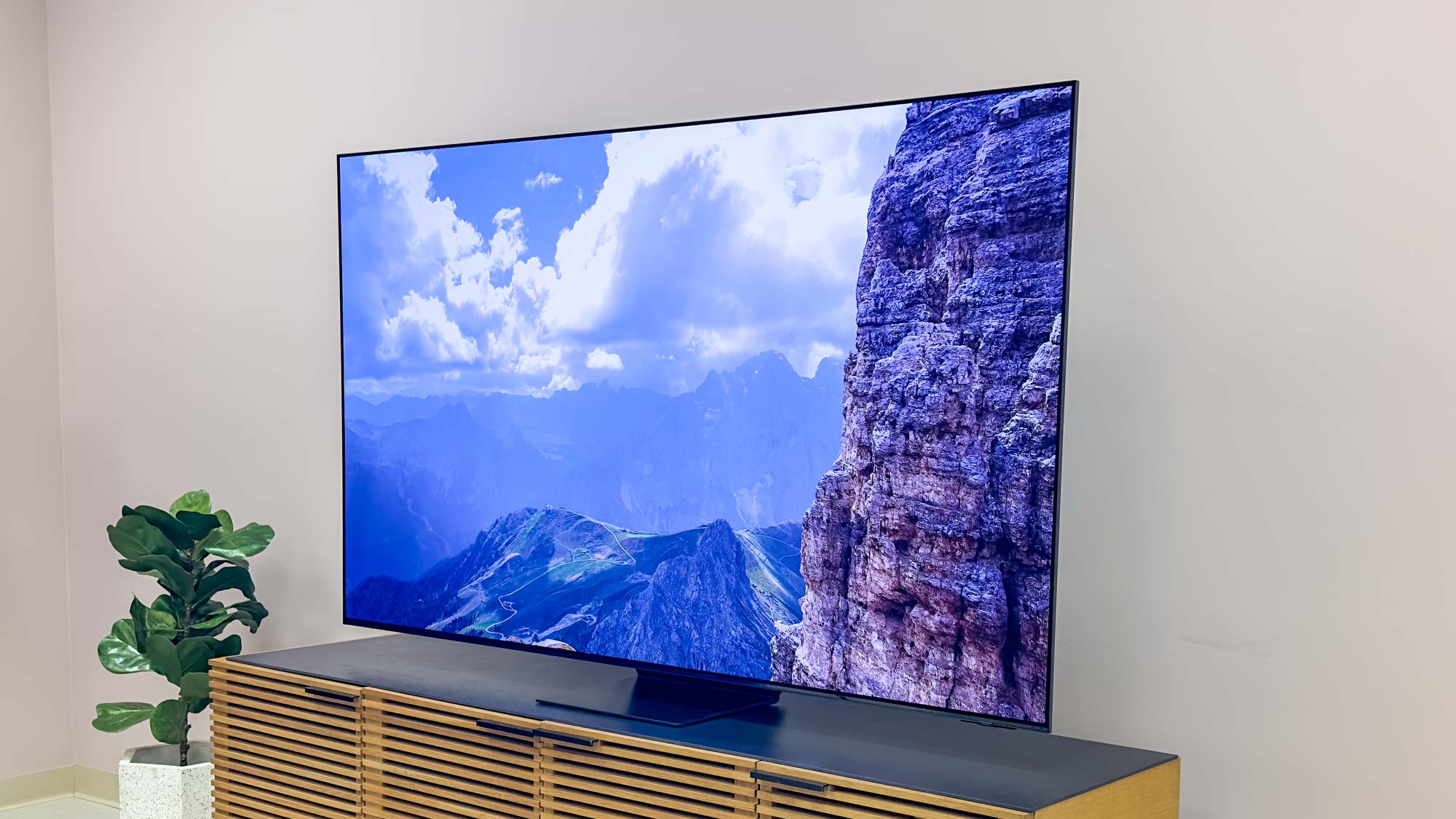
The Samsung S95C OLED TV — one of the most anticipated TVs of 2023 — left a strong impression when it landed on our bench for testing. It earned high marks across the board, but there’s one performance upgrade that’s more impressive than the rest: the TV’s brightness.
When QD-OLED TVs hit the market last year, they didn’t quite deliver on the promised brightness improvements over regular OLED TVs. The Samsung S95B OLED TV reached 1010 nits, which is certainly strong for an OLED set, but still doesn’t rival QLED TVS (premium and value-friendly alike.)
In the same 10% window, the new 65-inch Samsung S95C OLED TV reached an outstanding 1,369 nits. That’s approximately a 30% increase in brightness, a significant jump generation-over-generation according to our testing protocols.
Compared to the Samsung QN95C Neo QLED TV, which reached 2,321 nits in our preliminary testing, the S95C’s brightness score might not seem outstanding. But Samsung’s Neo QLED TVs are ridiculously bright. In fact, they’re the brightest TVs we’ve ever tested.
Instead, we should look at the Samsung S95B vs. S95C OLED TV, or the S95C compared to the Sony A95K QD-OLED TV which tapped out at 1,042 nits in the same 10% HDR window.
Sony’s 2022 QD-OLED eked out an edge over the S95B, but the upcoming Sony Bravia XR A95L OLED TV needs to step up its brightness performance if it wants to maintain the best TV spot over Samsung. Sony claims that a 200% increased peak brightness should upgrade the A95L's QD-OLED performance to better rival LED TVs, but we’ll need to test that for ourselves.
Brighter QD-OLED = Burn in?
Similarly, we’ve yet to test the LG G3 OLED TV. Like Sony, LG promises the G3’s evo OLED technology will deliver a 70% brighter overall picture than non-evo OLED TVs. LG also maintains that its OLED panels are superior to the QD-OLED ones from Samsung, citing OLED burn-in results from a Rtings’s Accelerated Longevity Test.
As reported by Rtings after two months, "the two QD-OLED displays on this test (Samsung S95B OLED and the Sony A95K) are both showing signs of possible permanent image retention (burn-in), but the LG WOLED TVs like the LG C2 OLED and the LG G2 OLED are clean."
The newer S95C was not used for the longevity test, but we’re certainly anxious to see if the increased brightness causes the set to suffer from burn-in more quickly than a standard OLED TV. Manufacturers have put effort towards diminishing OLED burn-in concerns in recent years, but addressing the same issue for QD-OLED might require different solutions.
Samsung S95C OLED TV outlook
While our Samsung S95C OLED TV lab tests left us amazed (and a little concerned), we won’t come to hard conclusions until we’ve conducted a full review based on anecdotal use. Based on what we’ve seen so far, it could make a more convincing case for Samsung’s OLED lineup going forward and become one of the best TVs of the year.
What’s more, by upgrading to a 144Hz panel, introducing a 77-inch size, and adopting the One Connect box for cable management, the S95C has plenty of new features that make us excited to spend more time with the TV.







